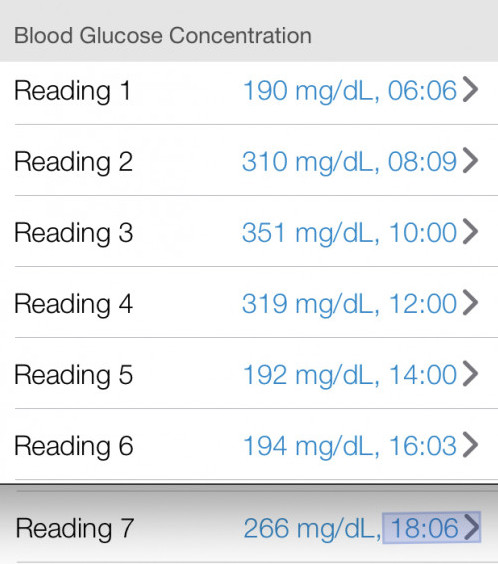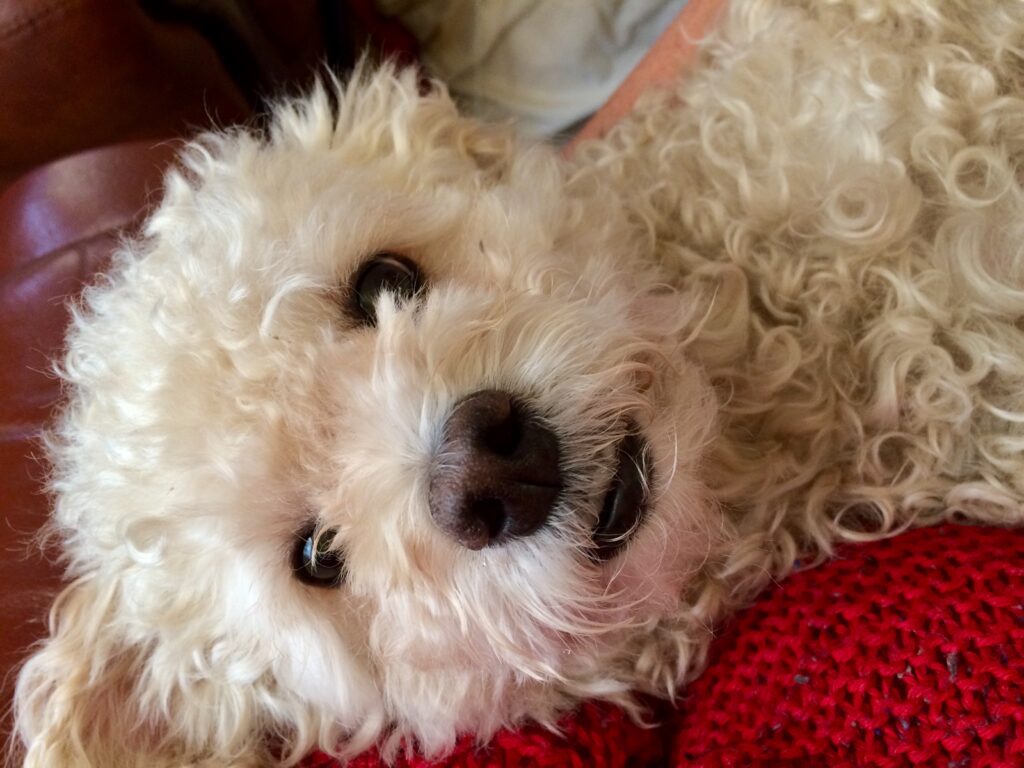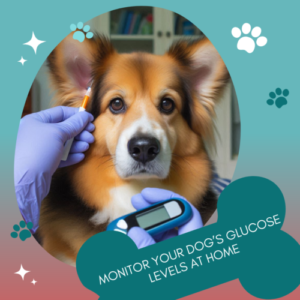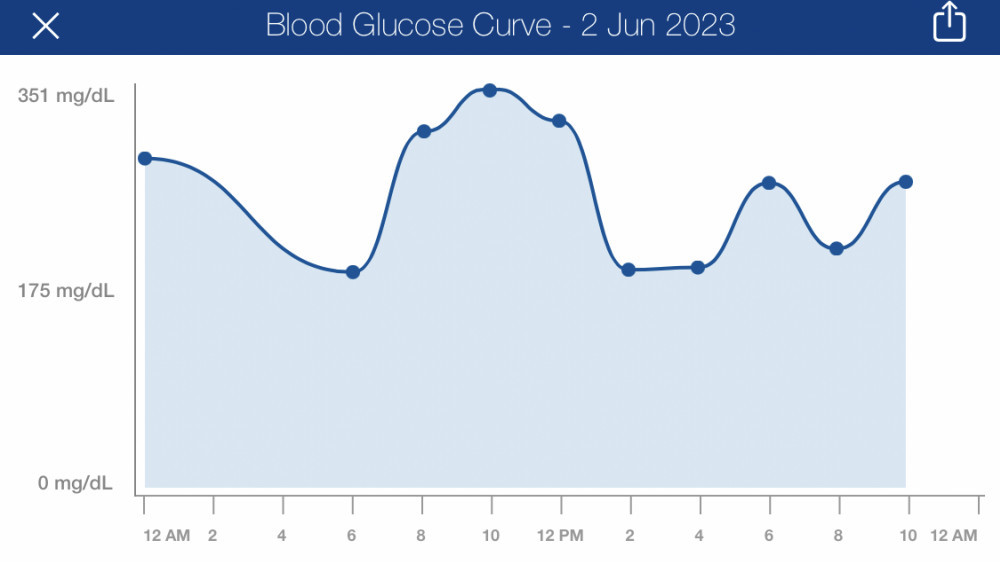Just like in humans, diabetes is a common chronic condition in dogs that requires ongoing, careful management to ensure their well-being. A crucial aspect of managing Brady’s diabetes is monitoring his blood glucose levels. This means collecting the data to make a blood glucose curve. This curve provides valuable insights into Brady’s blood sugar fluctuations. Being able to do this at home has made caring for Brady more affordable for us, and much more comfortable for Brady.
What is a blood glucose curve?
A glucose curve is a graphical representation of a dog’s blood glucose levels measured at various times throughout the day. Every two hours we record the time and Brady’s glucose number to plot a curve. The scale on the vertical axis shows the blood sugar levels and the time is on the horizontal axis. Plotting his blood sugar levels at regular intervals during the day allows us to see how his blood sugar fluctuates during a typical 12-hour cycle from one meal and insulin shot to the next. The glucose levels in the blood are measured in milligrams per deciliter (mg/dL) in the USA. In Europe the measurement is millimole per liter (mmol/L). The shape of the curve helps us monitor his routine and it helps the vet to understand how effectively the insulin is managing Brady’s blood sugar throughout the day. This was especially important when Brady was first diagnosed. It took several months for us to get his dosage of insulin just right.
What is a good glucose level for dogs?
A stable dog with diabetes will have blood sugar levels between 100-300 mg/dL (5.6-16.7 mmol/L). If the curve shows consistently high blood glucose levels (hyperglycemia) or severe fluctuations, you can make adjustments to the insulin dosage, your dogs diet, or the amount of exercise they get. Below is the data that was used to create the curve you see at the top of the page. It is not perfect. But this is why we do it. He’s not showing any symptoms, but his numbers could be a bit better. We learned from this that he needs a longer walk in the morning, because his blood sugar levels were up over 300 after his breakfast, and after dinner they were getting close to 300 as well…so longer walks after meals. Done. This is the value of taking the time to monitor your dog’s blood sugar regularly. You can catch things before they become a problem.

Brady started out with just 2 units of insulin. An over-dose is very dangerous, so vets start out cautiously. The dose we have settled on is 7 units. It took a while of weekly tests for us to get to this. Each change lasted at least two weeks before we would change it again. Sometimes we thought we had it stable, and then we would notice that he was drinking and peeing a lot ( a sign of high blood sugar), or that he seemed really lethargic in the afternoon (a sign of low blood sugar). So, we were testing him once or twice during the week, and then doing a full curve on Sundays. It was not a linear path up to 7 units. I remember one time we upped his dose and his blood sugar unexpectedly went higher. We had to go back down for a while. This is all part of it. We learned to be patient. It takes a while to get it everything right, and vigilance to keep it that way. Learning to do the blood tests ourselves makes a huge difference in our confidence caring for Brady. Our ability to test at home allows us to really personalize our approach to Brady’s diabetes and test him in a place where he feels safe with people he trusts. We actually get better readings than the vet could get because he is not stressed. At this point, Brady’s diabetes is under control and he is leading a happy dog life. We test him any time we see something that concerns us, and do a full curve just once per month.
To test blood glucose in dogs

To conduct a glucose curve for your dog, the first reading should be taken before the first meal of the day. We use a human blood glucometer that we bought at a local drug store. The way you get the blood sample is to prick your animal. The most common sites are the ear or a paw pad. We prick Brady’s ear. First we get the glucometer all set up with the testing strip in place so that once we prick him, we can quickly take the sample and release him. To help make it easy, we warm up his ear first. We use a sock filled with whole flaxseed that we heat in the microwave for 30 seconds or so. We make sure there are no scalding hot spots that will touch Brady’s ear, but testing when his ear is nice and pink is much easier on us both. He lays down on one side. Then, we warm up the ear that is not on the ground and pet him while we hold the sock on his ear. When it’s pink, we use the lancet and quickly prick his ear. The last step is to collect the blood on the testing strip. I have found that a scooping motion towards the drop works better than a top-down approach. It doesn’t take much blood, but if you don’t have enough, or take too long to get it on the test strip, the tester won’t read it, and you have to do it all again. Brady tolerates it really well, and has learned the signals for when to lie still and when he can get up. When he hears the beep signaling that it is showing the glucose reading he pops up and starts wagging because we always give him a couple small 2 calorie treats after the test. That makes it worth it for him.
Conclusion
Toddy and I really believe the glucose curve is an invaluable tool in managing Brady’s diabetes. By closely monitoring his blood glucose levels over time, we can can make informed decisions about treatment adjustments and lifestyle changes. When we go to our veterinary check-ups with our glucose curve in hand, it immediately gives us a good rapport with the vet and helps them understand how to help us keep him healthy for many more years.
Thanks for reading. If you have any comments, questions or suggestions, please leave them in the comments below. Or email me directly at julie@carefordiabeticdog.com.


